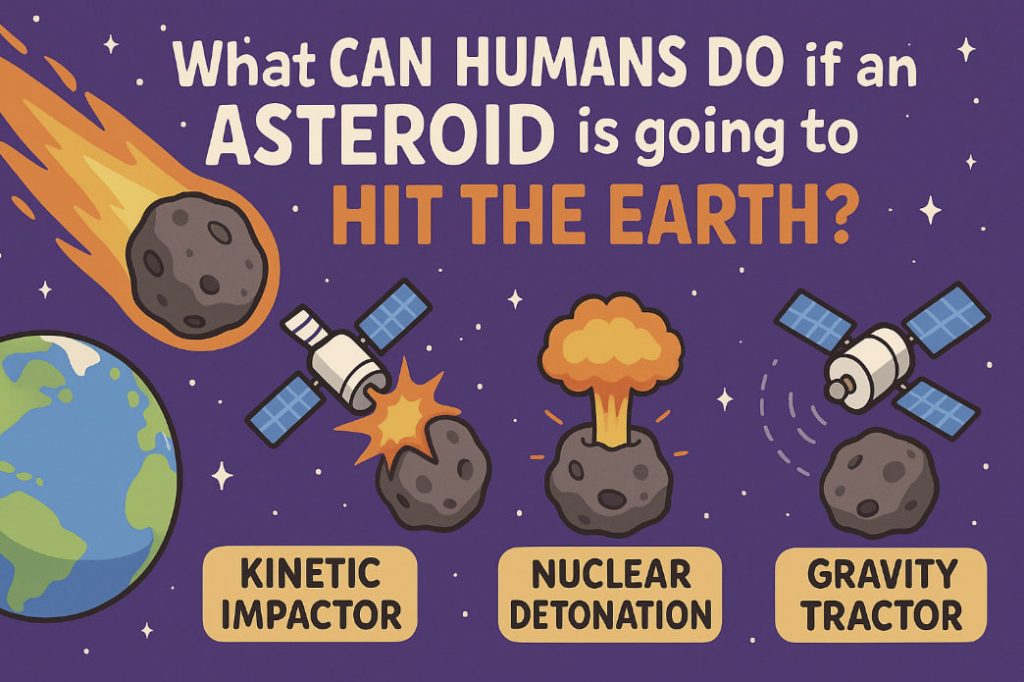The idea of an asteroid striking Earth may sound like science fiction, but it’s a real possibility. In fact, Earth has been hit by large asteroids before — the most famous being the one that contributed to the extinction of the dinosaurs 66 million years ago. So, what if scientists discover that a large asteroid is on a collision course with our planet in the coming years?
How Would We Detect a Dangerous Asteroid?
Global space agencies, such as NASA and ESA, constantly monitor the skies for Near-Earth Objects (NEOs) using:
- Ground-based telescopes
- Space-based infrared observatories
- Automated tracking systems that predict orbital paths
Once an object is detected, its orbit is calculated to determine if and when it might hit Earth. A warning period of at least a few years is critical for any effective response.
Possible Responses to an Incoming Asteroid
If a potentially catastrophic asteroid is confirmed to be on a collision course, here are the main strategies humanity could use:
1. Kinetic Impactor
This method involves crashing a spacecraft into the asteroid to change its velocity and slightly alter its orbit. NASA’s DART mission successfully tested this in 2022 by impacting asteroid Dimorphos — proving that redirection is possible.
2. Gravity Tractor
A spacecraft could fly alongside the asteroid, using its gravitational pull to slowly tug the asteroid off its path over time. This is a gentle but effective method if there is enough warning time.
3. Nuclear Detonation
If time is short and the asteroid is large, a nuclear explosion near (not on) the asteroid’s surface could vaporize part of it, creating a thrust that pushes it off course. While powerful, this option carries risks and international legal complications.
4. Mass Drivers or Lasers
More speculative ideas include using robotic mining machines to throw material off the asteroid (changing its momentum), or high-powered lasers to slowly vaporize the surface and alter its trajectory.
Emergency Plans for Earth
If deflection is impossible or only partially successful:
- Evacuation zones could be established based on the predicted impact site.
- Civil defense preparations would focus on shelter, food supply, and emergency communication.
- In worst-case scenarios, impacts could affect climate and agriculture globally (impact winter).
Are We Ready?
Space agencies have developed plans and global coordination systems, such as:
- NASA’s Planetary Defense Coordination Office
- ESA’s Space Safety Programme
- International Asteroid Warning Network (IAWN)
However, more funding, international cooperation, and advanced technology are still needed to respond rapidly to a real threat.
Could We Prevent a Global Disaster?
Yes — with early detection, global collaboration, and fast action, humanity has the tools and knowledge to deflect or mitigate an asteroid threat. The key is early preparation, continued investment in space science, and realistic emergency planning.
Unfortunatly, at the moment, if a large asteroid is discovered that is likely to collide with Earth in the near future, humanity has almost no chance of survival.
Only by uniting as humanity can we face the challenges of the modern world.
Glossary
- Near-Earth Object (NEO): An asteroid or comet whose orbit brings it close to Earth.
- Kinetic Impactor: A spacecraft that collides with an asteroid to alter its path.
- Gravity Tractor: A spacecraft that uses its own gravity to pull an asteroid onto a new course.
- Impact Winter: A period of global cooling caused by dust blocking sunlight after an impact.
- Deflection: Changing the path of an asteroid so it misses Earth.


